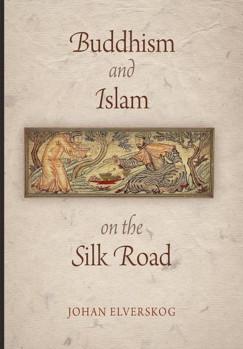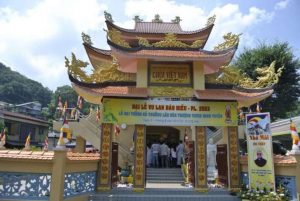Many scholars and historians have endeavored to discover the latent reasons behind the decline of Buddhism in the country of its birth, India. Although rejected by certain scholars, several reasons have been highlighted in some popular historical narratives, such as corruption within the Buddhist monastic institution, Brahmanic persecution, and the Muslim invasion, in which monasteries were burned down and many Buddhists were forced to convert to Islam. As such, people have come to accept as true that Buddhists and Muslims never enjoyed good relations after coming into contact with each other. Johan Elverskog’s book, Buddhism and Islam on the Silk Road, challenges this perception by giving us a new perspective on Buddhist and Islamic interaction along this extensive trade route.
The author, Johan Elverskog, is Altshuler University Distinguished Teaching Professor and Chair of Religious Studies at Southern Methodist University in the United States. Currently, he is a fellow at Stanford’s Center for Advanced Study in the Behavioral Sciences and working on a project called “Earthquakes as Enlightenment: An Environmental History of Buddhist Asia.” He was honored with the Award for
Excellence in the Historical Study of Religion from the American Academy of Religion for Buddhism and Islam on the Silk Road in 2011.
The book highlights the Silk Road in order to examine the history of Buddhist and Muslim inter-religious contact in a positive way. Elverskog’s focus of attention covers a wide expanse of territory, from Afghanistan (early 8th century) to the Mongol empire (13th–14th century), to China at the end of the Qing dynasty (1644–1911). He explores religion, art, music, medicine, science, trade, and lifestyle with a particular emphasis on cross-cultural exchange, in which the two religious traditions not only enhanced each other, but also intermixed in many ways.
The book contains five chapters in addition to an introduction and a conclusion. It begins with the attack on Nalanda University by mounted Muslim soldiers in 1202, when teachers and students were killed and buildings left in ruins. This is often considered to mark the demise of Buddhism in India, but Elverskog disputes this interpretation, arguing that the stereotypical image of Muslims as innately hostile towards Buddhists is a construction of Western scholars: “While Indian nationals questioned the moral righteousness and glory of the British Raj, they nevertheless continued with the historical model of blaming the Muslims.” (p. 2). Re-examining this anti-Muslim view, he presents his argument that the Bamiyan Buddha statues in Afghanistan “survived thirteen-hundred years of Muslim rule” (p. 4), which he considers a testament to positive Buddhist-Muslim cross-cultural interaction. However, the author does not address the reason why Nalanda was demolished.
The first chapter, “Contact,” discusses how Buddhists and Muslims first made contact via the Silk Road trade route in the early 8th century: “Fifty thousand Arab families were transported from Iraq’s Basra in order to bring Central Asia and its wealth firmly within the orbit of the Umayyad caliphate (661–750 CE)” (p. 44). This was the area—mentioned by the Chinese monk-pilgrim Xuanzang (602–64) in terms of having seen 10,000 monks and 460 monasteries in Bamiyan—where Buddhists and Muslims first came into contact.
The second chapter, “Understanding,” explores the interaction between Buddhists and Muslims in the early period of their contact. Living side by side, they exchanged ideas, technology, and their respective intellectual achievements. Although the two religious groups enjoyed a mutual understanding and fruitful cross-cultural dialogue, within a very short time the Muslims had conquered a large area in Inner Asia and promoted Islam—Elverskog claims that “there were 100,000 Muslims in 9th-century Canton” (p. 91). Though they were expelled during the Huang Chao rebellion of 879 CE, this number, even if exaggerated, amply reflects the power and scope of the Muslim trading network at this time. With Muslims assuming power in a number of countries, the division between Buddhists and Muslims commenced.
The third chapter, “Idolatry,” deals with cross-cultural artistic production and emphasizes the Mongol empire’s interaction with Buddhists. During the 13th century, the empire’s Muslims came into direct contact mostly with tantric Buddhism, and there were exchanges of both art and culture. Islamic art related to Buddhism, such as “The Grove of Jetavana, where the Buddha achieved Enlightenment,” from Jami’ al-Tawarikh by Rashid al-Din (1247–1318), tells of peaceful interaction between Muslims and Buddhists, in direct contrast to the stereotypical images of fierce destruction.
The fourth chapter, “Jihad,” deals with the post-Mongol period (1400–1650) and the Buddhist-Muslim conflict. In the sub-section “Religion, Politics and Intolerance,” Elverskog discusses the position of the Dalai Lama in Tibet: “Just as the Rinpung were about to capture Lhasa, Mongol envoys arrived and requested Sonam Gyatso to meet with Altan Khan on June 19, 1578, at Lake Kokenuur. . . . When the two met they followed the protocols of the Buddhist model of rule established by Esen Khan. Altan thus gave Sonam Gyatso the title Dalai Lama (a title retroactively applied to his two previous incarnations, making him the Third Dalai Lama). He in turn gave Altan the title Brahma, Great, Powerful, Cakravartin King of the Dharma. A glorious title, but in truth the Dalai Lama was not really satisfied with Altan Khan” (p. 218).
The last chapter, “Halal,” explores the dietary habits of Buddhists and Muslims during the Qing dynasty. Here, the author focuses on the arguments between Buddhists and Muslims over the practice of halal, which is a humane method of slaughtering animals as prescribed by the Qur’an and of great importance to Muslims. However, Elverskog also mentions that the Mongol nobleman and writer Injannashi (1837–92) argued that some Muslim rituals, including the practice of halal, were in fact similar to those of Buddhists.
Finally, in the conclusion, by referring to Injannashi’s metaphor of a common humanity based on ideas such as ecumenicalism, multiculturalism, pluralism, and cosmopolitanism, Elverskog claims: “The case of Buddhists and Muslims in Inner Asia is no different” (p. 261).
Overall, the book is a record of Buddhist and Muslim interaction within a rich cultural history. Elverskog’s work is a unique contribution to the contemporary history of the relationship between the two religions, and prompts readers to rethink previous negative impressions.
Buddhism and Islam on the Silk Road was published by University of Pennsylvania Press in 2010.












